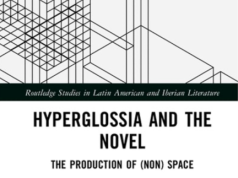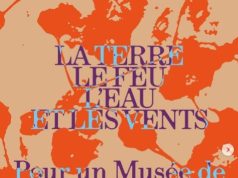

Denise “The Vamp DeVille” Zubizarreta (Latinamedia.co) explains that “this is the second segment in a series highlighting Latina artists like Elsa María Meléndez, the uphill battles we face, and the ways we’re counteracting our own erasure.”
The first time I wrote about Elsa María Meléndez for Hyperallergic, I knew her work deserved more than just a one-time feature – it deserves consistent, critical attention. But that’s the problem, isn’t it? Latina artists don’t get the luxury of sustained visibility. They get one article, one mention, one fleeting moment in the press before the industry moves on, back to the same rotating cast of institutional darlings.
Meléndez’s work is the kind you can’t look away from. Sumptuous yet subversive, her large-scale textile pieces unravel the myth of equality in Puerto Rico, laying bare the realities of gendered violence, colonialism, and political neglect. Her art is soft to the touch, yet unflinching in its message – a contradiction that makes it impossible to dismiss. She is an artist weaving Puerto Rico’s pain and resilience into every thread, forcing the viewer to engage with what they would rather ignore.
So why isn’t she a household name?
The Art World Loves Textiles – Just Not When Latina Artists Use Them
Let’s be real: if a white male artist was working with fabric at this scale, he’d be hailed as a radical. He’d be celebrated for “elevating” textiles to the realm of fine art, even though Latina, Black, and Indigenous artists have been using fabric as resistance for centuries. Instead, Meléndez – and other Latina artists working in fiber arts – are often relegated to the sidelines of the mainstream art world, their work categorized as “folk” rather than conceptual. Decorative rather than political.
But Meléndez’s art isn’t passive, and it sure as hell isn’t just decoration. Her pieces are raw, unapologetic takedowns of Puerto Rico’s colonial status, its ongoing economic crisis, and the experience of motherhood and time.
So why isn’t the art world paying attention?
Press Coverage as an Afterthought
Meléndez should be everywhere – in major museums, in auction houses, in high-profile art publications. And yet, her name remains relatively unknown outside of Puerto Rico and the Latin American art world. Why? Because the art world operates on selective vision.
Mainstream press outlets love to cover textile art when it’s coming from a white woman “reclaiming” domestic labor as a form of feminist expression. But when Latina artists do it? The response is silence. Or worse: condescension. As if their work is too political, too raw, too uncomfortable to fit the neat narratives the art world prefers to tell about Latinidad – narratives of vibrancy and passion, rather than rage and resistance.
Recognizing Elsa María Meléndez fully would mean reckoning with the uncomfortable truths of Puerto Rico – truths that the art world, much like the U.S. government, prefers to ignore. Because to center Puerto Rican artists is to confront the reality that Puerto Rico is still a colony, no matter how much the U.S. wants to pretend otherwise.
Meléndez’s work doesn’t allow for that kind of cognitive dissonance. Her textiles weave together the island’s inequalities, refusing to let anyone look away. She reclaims domestic materials – fabric, thread, embroidery – forms often dismissed as “women’s work,” and turns them into acts of public protest. And she does all of this in an art world that continues to treat Puerto Rico as an afterthought, a place only worth discussing when a hurricane devastates it, when protests fill the streets, when it becomes politically convenient to care. [. . .]
Read the full review at https://latinamedia.co/elsa-maria-melendez/
[Shown above: Elsa María Meléndez, “La isla de las nostalgias” (Island of nostalgia) (2020–22), embroidery on canvas with discarded stuffed stockings and wire; canvas 170 x 56 inches; structure 38 x 39 x 14 inches.]
Denise “The Vamp DeVille” Zubizarreta (Latinamedia.co) explains that “this is the second segment in a series highlighting Latina artists like Elsa María Meléndez, the uphill battles we face, and the ways we’re counteracting our own erasure.” The first time I wrote about Elsa María Meléndez for Hyperallergic, I knew her work deserved more than just a one-time feature – it





